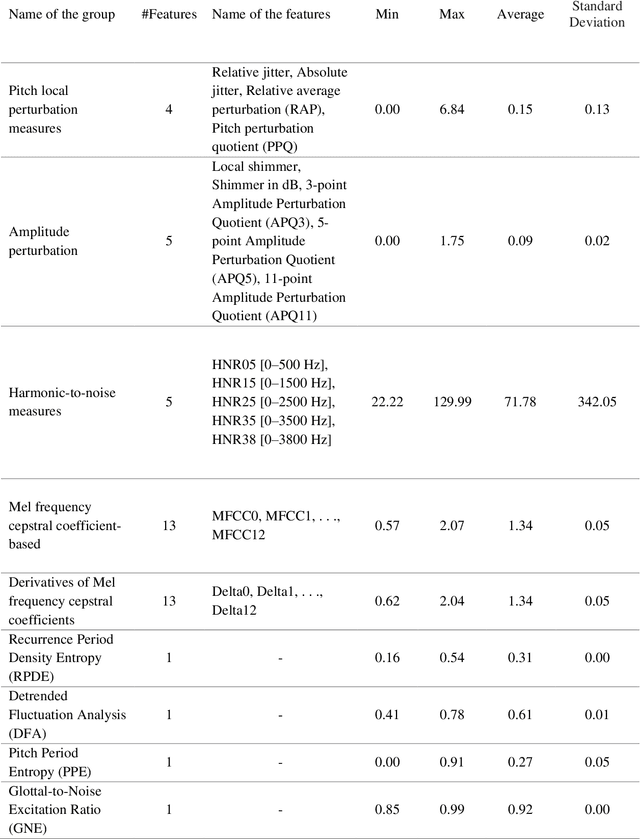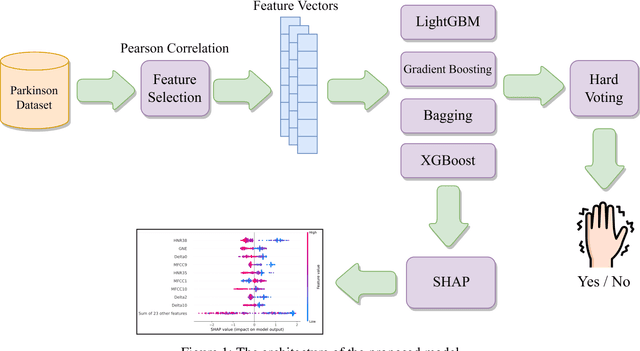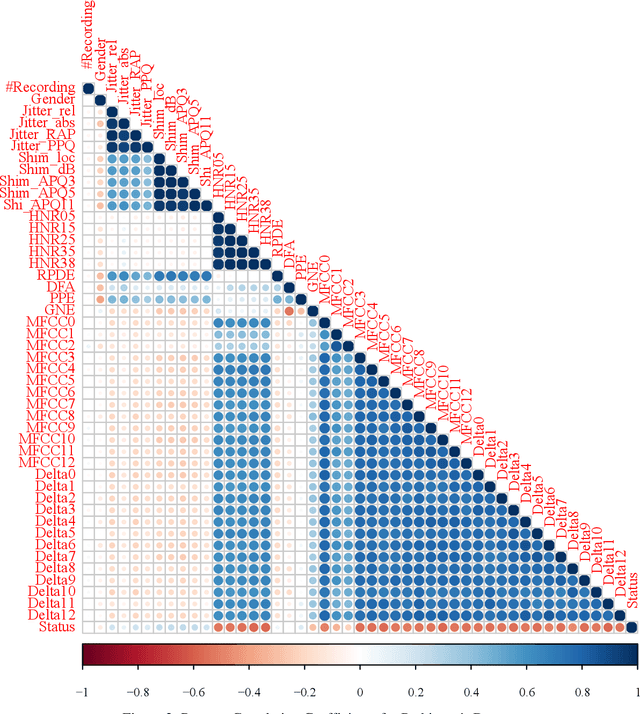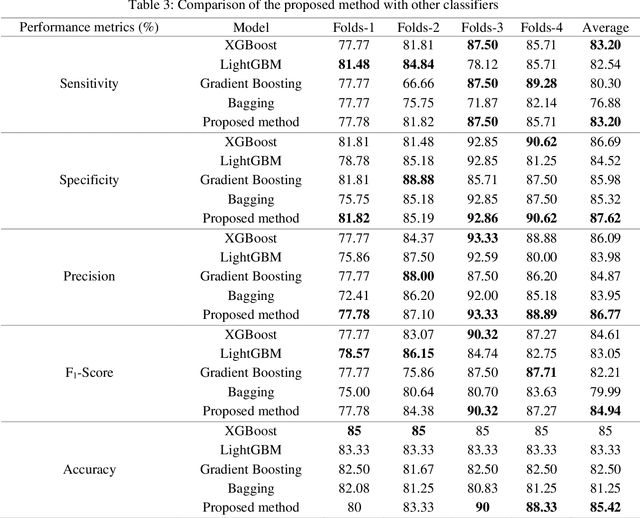Paria Ghaheri
PD-ADSV: An Automated Diagnosing System Using Voice Signals and Hard Voting Ensemble Method for Parkinson's Disease
Apr 11, 2023Abstract:Parkinson's disease (PD) is the most widespread movement condition and the second most common neurodegenerative disorder, following Alzheimer's. Movement symptoms and imaging techniques are the most popular ways to diagnose this disease. However, they are not accurate and fast and may only be accessible to a few people. This study provides an autonomous system, i.e., PD-ADSV, for diagnosing PD based on voice signals, which uses four machine learning classifiers and the hard voting ensemble method to achieve the highest accuracy. PD-ADSV is developed using Python and the Gradio web framework.
Diagnosis of Parkinson's Disease Based on Voice Signals Using SHAP and Hard Voting Ensemble Method
Oct 03, 2022



Abstract:Background and Objective: Parkinson's disease (PD) is the second most common progressive neurological condition after Alzheimer's, characterized by motor and non-motor symptoms. Developing a method to diagnose the condition in its beginning phases is essential because of the significant number of individuals afflicting with this illness. PD is typically identified using motor symptoms or other Neuroimaging techniques, such as DATSCAN and SPECT. These methods are expensive, time-consuming, and unavailable to the general public; furthermore, they are not very accurate. These constraints encouraged us to develop a novel technique using SHAP and Hard Voting Ensemble Method based on voice signals. Methods: In this article, we used Pearson Correlation Coefficients to understand the relationship between input features and the output, and finally, input features with high correlation were selected. These selected features were classified by the Extreme Gradient Boosting (XGBoost), Light Gradient Boosting Machine (LightGBM), Gradient Boosting, and Bagging. Moreover, the Hard Voting Ensemble Method was determined based on the performance of the four classifiers. At the final stage, we proposed Shapley Additive exPlanations (SHAP) to rank the features according to their significance in diagnosing Parkinson's disease. Results and Conclusion: The proposed method achieved 85.42% accuracy, 84.94% F1-score, 86.77% precision, 87.62% specificity, and 83.20% sensitivity. The study's findings demonstrated that the proposed method outperformed state-of-the-art approaches and can assist physicians in diagnosing Parkinson's cases.
 Add to Chrome
Add to Chrome Add to Firefox
Add to Firefox Add to Edge
Add to Edge